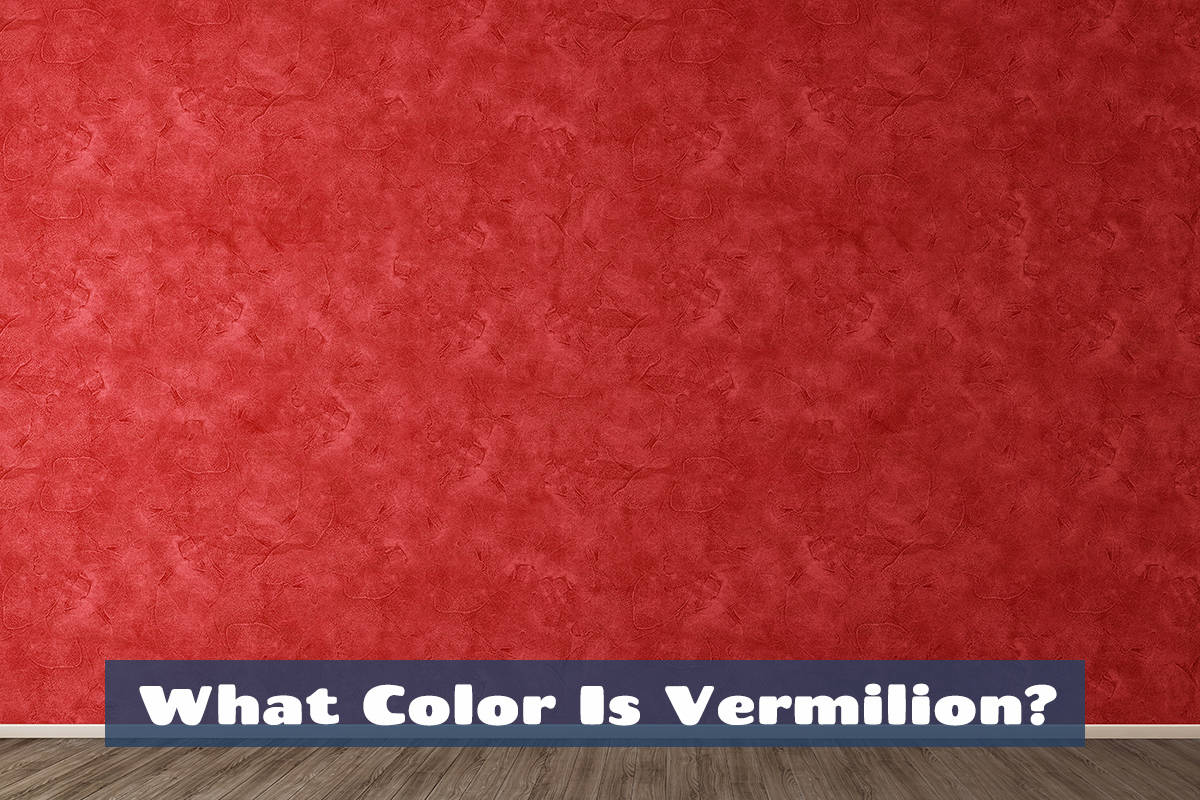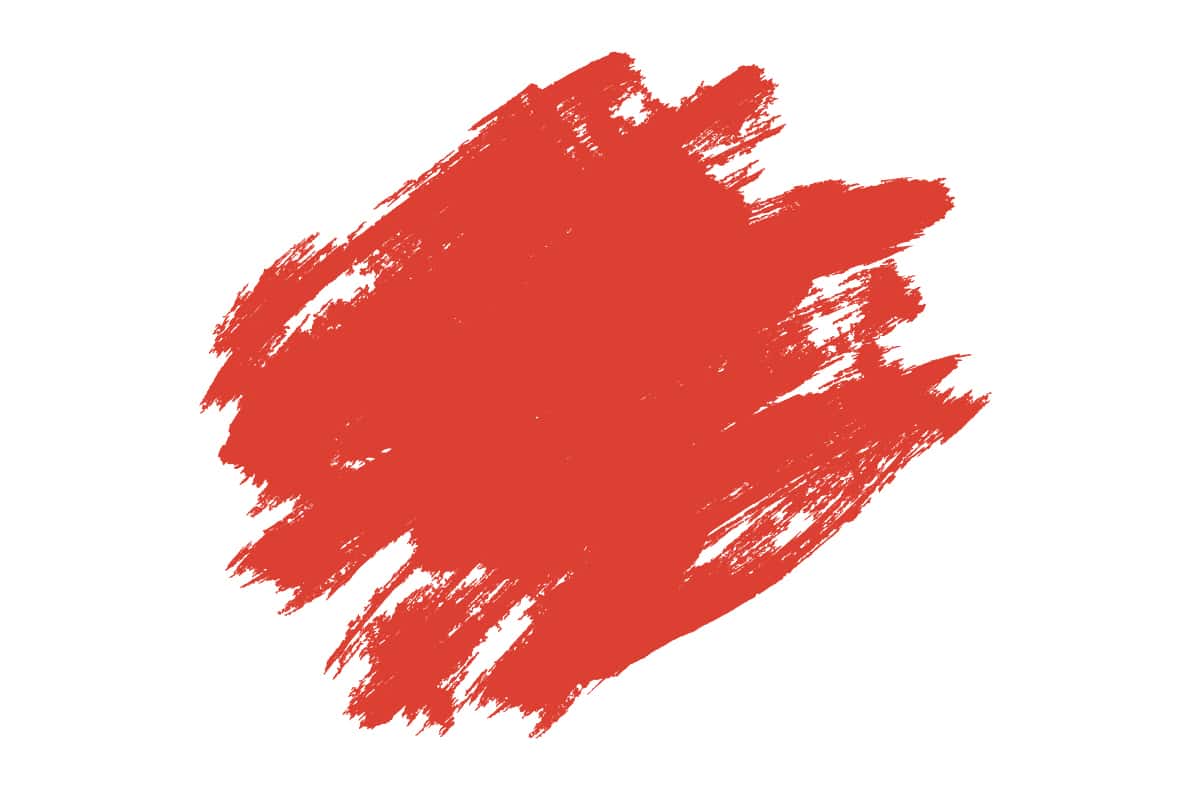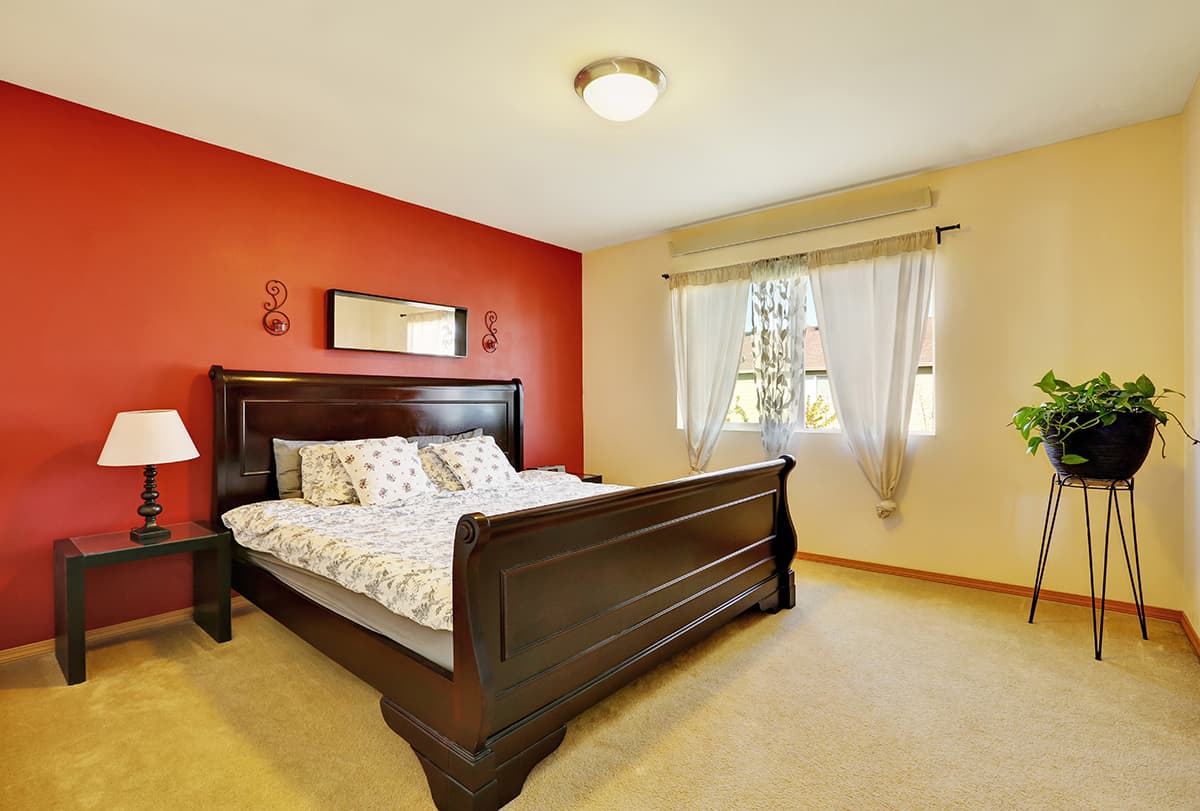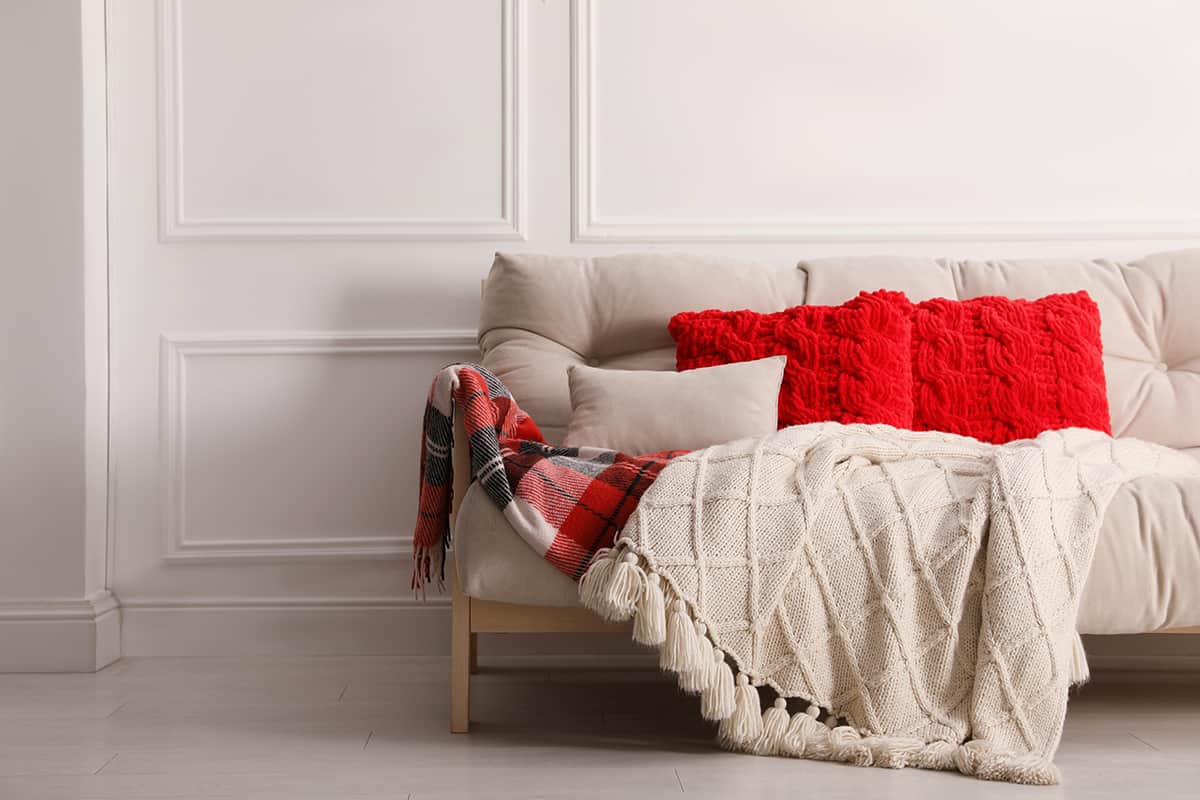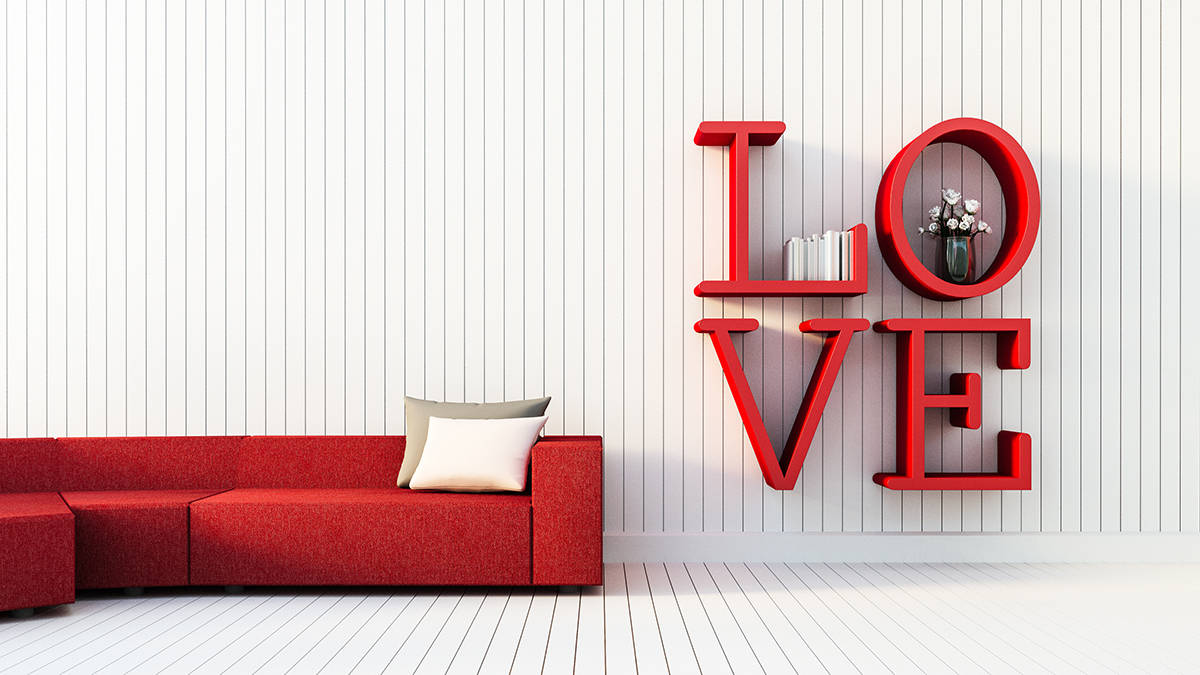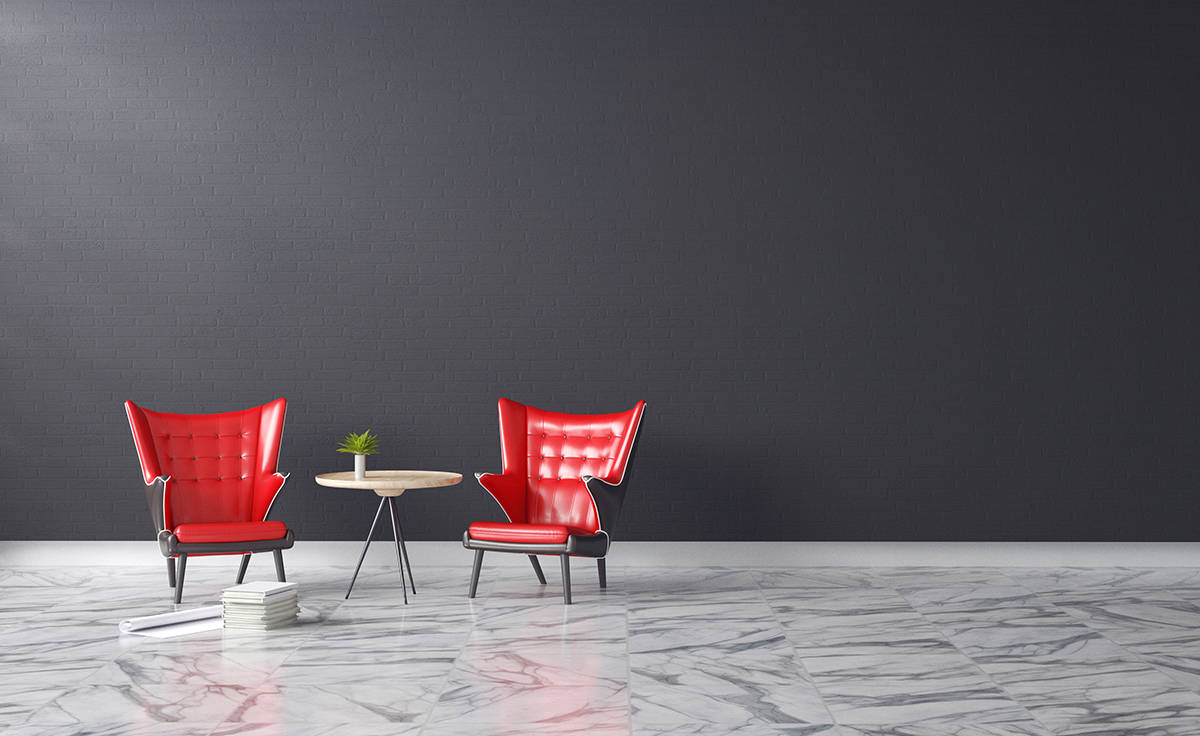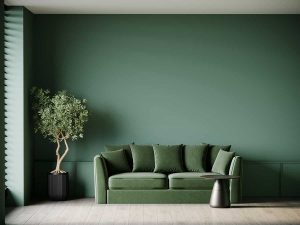Vermilion is a bright red-orange color. It is often described as a vivid, reddish-orange hue and is commonly used in art and home decor to create bold designs. The color gets its name from the mineral cinnabar, which was historically used to produce the pigment vermilion.
This guide explores the characteristics of the color vermilion and looks at how it can be used for the best effect in interior design.
What is Vermilion?
Vermilion is a bright red pigment typically made from the mineral cinnabar, which is a form of mercury sulfide. Cinnabar is crushed into a fine powder, and this powder can be mixed with a binding agent, such as oil or gum, to create vermilion paint or ink. Vermilion is known for its vibrant red color and has been used in various cultures throughout history for painting, coloring, and as a pigment for cosmetics.
However, it’s important to note that cinnabar, the source of vermilion, contains mercury, which is toxic. Modern manufacturing processes have developed safer alternatives to vermilion, but historically, the use of vermilion pigments could be hazardous to health if not handled properly.
Colors Similar to Vermilion
Colors that are similar to vermilion include various shades of red-orange and red. Colors that closely resemble vermilion include:
Red-Orange
Red-orange is a color that falls between red and orange on the color spectrum. It is a warm color that leans more towards the red side but still contains noticeable orange undertones.
It is a fiery, warm color that is typically associated with energy, warmth, and vibrancy. Vermilion is essentially a vivid red-orange color. Therefore, any shade of red-orange can be considered similar to vermilion, with variations in brightness and saturation.
Scarlet
Scarlet is a bright, vibrant shade of red with a slightly orange undertone. It is often described as a deep and intense red color that is rich and bold. Scarlet can vary in its exact hue and saturation, but it generally falls within the spectrum of red with a hint of orange.
It is a color that is associated with passion, love, and strong emotions. As a shade of red with orange undertones, scarlet is very similar to vermilion but leans more towards a red hue than orange. Scarlet can be used in place of vermilion to achieve a bold impact, but the outcome may not feel as warm or fiery.
Crimson
Crimson is a deep, rich shade of red that is slightly dark and leans toward the blue end of the red color spectrum. It is often described as a deep red with a strong, dark undertone, and it is known for its intense and dignified appearance. Crimson is a color associated with luxury, royalty, and elegance.
It can vary in exact hue and saturation, but it typically has a dark and somewhat purplish-red quality, making it distinct from brighter or lighter red shades. Crimson can be seen as a darker and less orange version of vermilion, making it a good option in settings where vermilion reads as too orange.
Tomato Red
Tomato red is a bright and vivid shade of red that closely resembles the color of ripe tomatoes. It is a warm red color with a slight orange undertone, making it appear vibrant and energetic. Tomato red is often used in fashion, design, and various applications where a bold and eye-catching red is desired.
It gets its name from the similarity in color to ripe, red tomatoes. As a vibrant and warm red-orange shade, tomato red shares many similarities with vermilion.
Fire Engine Red
This is a bold, bright red that can be close in appearance to vermilion. Fire engine red is a very bright and intense shade of red, similar in hue to the red used on many fire trucks and emergency vehicles. Fire engine red typically has a pure and saturated quality, without significant undertones of other colors.
It is a color that stands out prominently and is commonly used for safety equipment, warning signs, and objects that need to be easily seen and recognized. It lacks the orange undertones found in vermilion, yet has an equally bold and bright appearance.
Cadmium Red
Cadmium red is an artist’s color that can range from a deep red to a reddish-orange, depending on the specific shade. Cadmium red is derived from cadmium sulfide, a chemical compound, and comes in a range of shades from light to dark.
The specific shade of cadmium red can vary depending on the manufacturing process and the addition of other pigments or chemicals. Like vermilion, cadmium red is derived from a chemical compound that can be harmful when ingested.
Is Vermilion Red or Orange?
Vermilion is a shade of red-orange that sits in between red and orange on the color spectrum. However, if it was to be described as a single hue, it would be considered a shade of red. This is because vermilion is predominantly made from red, with orange undertones. It is a warm variety of red on the orange side of the color spectrum as opposed to cooler reds that sit closer to the purple side of red on the color spectrum.
How to Use Vermilion in Home Decor
Vermilion can add a lively and energetic touch to your home decor while also creating a warm and cozy environment. The vibrancy of vermilion means it is best used strategically and in moderation, balanced out by neutral or subtle shades. The aim is to create a harmonious and visually pleasing balance between vermilion and other colors in your home decor.
Accent Walls
Painting one or more walls in a room with vermilion can create a striking focal point. It works well in living rooms, dining areas, or bedrooms as an accent wall. You can balance the intensity of vermilion with neutral or complementary colors on the other walls and add small splashes of vermilion around the rest of the room using accessories to create coordination and balance.
If a solid wall of vermilion feels too intense, consider using a wallpaper that features some vermilion accents, or think about portioning the wall into sections and using vermilion for the lower half of the room to ground it.
Accessories
Use vermilion-colored accessories like throw pillows, curtains, rugs, and artwork to introduce the color into your decor in a less permanent way. These accents can be easily changed or rotated to refresh your decor over time, allowing you to match your space to your mood or the seasons.
Patterned accessories such as cushions with cream and vermilion stripes can be a good idea so that these items add a splash of color without appearing overly bold.
Artwork
Hang vermilion-colored artwork or framed prints on your walls to bring the color into your space in a more subtle way. This can be an excellent way to introduce vermilion if you’re not ready to commit to larger elements or a way to test out if the color feels appealing in your space.
Balance with Neutrals
To avoid overwhelming your decor, balance vermilion with neutral colors like white, gray, beige, or black. This contrast can make the vermilion elements stand out even more and will help to ensure that the room doesn’t feel overwhelming.
